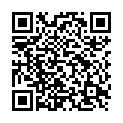|
|
|
| Module code: MST.SIG |
|
|
4V (4 hours per week) |
|
5 |
| Semester: 2 |
| Mandatory course: yes |
Language of instruction:
German |
Assessment:
Written exam 150 min.
[updated 01.10.2020]
|
MTM.SIG (P231-0015) Mechatronics, Master, ASPO 01.04.2020
, semester 2, mandatory course
MST.SIG (P231-0015) Mechatronics and Sensor Technology, Master, ASPO 01.04.2016
, semester 2, mandatory course
MST.SIG (P231-0015) Mechatronics and Sensor Technology, Master, ASPO 01.10.2011
, semester 9, mandatory course
|
60 class hours (= 45 clock hours) over a 15-week period.
The total student study time is 150 hours (equivalent to 5 ECTS credits).
There are therefore 105 hours available for class preparation and follow-up work and exam preparation.
|
Recommended prerequisites (modules):
None.
|
Recommended as prerequisite for:
MST.IAO
[updated 27.10.2015]
|
Module coordinator:
Prof. Dr. Michael Kleer |
Lecturer: Prof. Dr. Michael Kleer
[updated 27.10.2015]
|
Learning outcomes:
After successfully completing this course, students will be able to apply system theory to image processing problems. They will be familiar with the hardware and software used for image processing, in detail, and understand how they work together based on examples. Students will be able to identify and understand quality assurance tasks in the broadest sense of the term and implement them. Practical application is the main focus here.
[updated 01.10.2020]
|
Module content:
1. One-dimensional signals in the time domain, mathematical description, representation of the associated spectra, explanation of the filter process, transition to discrete signals and to discrete spectra, sampling, FFT
2. Two-dimensional signals, extending the mathematical theory
3. Images as two-dimensional signals in the spatial domain, simple key figures for images, quantifying and rasterizing images,
4. Storing and reproducing images and related compression methods
5. Discrete image processing algorithms im the spatial domain
6. Image processing algorithms in the frequency domain
[updated 01.10.2020]
|
Recommended or required reading:
Will be announced in the course.
[updated 01.10.2020]
|


